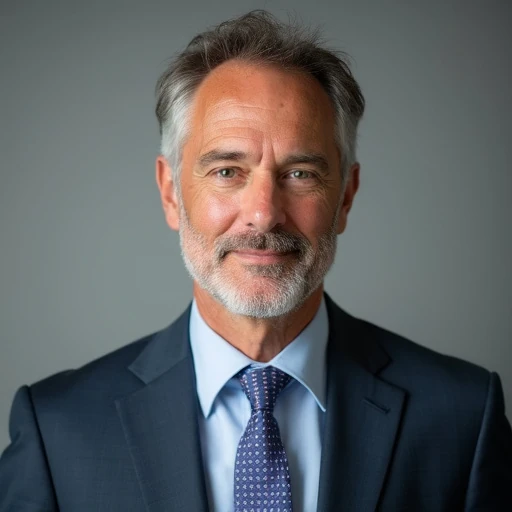Schweizer Radio und Fernsehen (SRF) is implementing a significant organizational change, merging its Bern studio's audio and digital editorial operations with the Zurich newsroom. This restructuring, effective from 2026, aims to streamline processes and adapt to evolving digital media consumption habits. The move will dissolve existing editorial teams for programs like "Echo der Zeit," a decision prompting concerns among some staff members regarding journalistic quality and operational efficiency.
Key Takeaways
- SRF is consolidating its Bern and Zurich audio/digital news operations.
- The "Newsroom 3.0" model will standardize workflows across locations.
- Programs like "Echo der Zeit" will lose independent editorial teams.
- SRF management emphasizes the need for digital adaptation.
- Staff concerns focus on potential impacts to journalistic quality and increased administrative tasks.
SRF Unifies Audio and Digital Editorial Structures
Swiss Radio and Television (SRF) is undertaking a major reorganization of its audio and digital editorial departments. The goal is to unify the organizational chart and create a more integrated workflow. This initiative, known as Newsroom 3.0, seeks to align the Bern studio with the existing newsroom model in Zurich.
Preparations for this new operational concept are currently in full swing. The changes are set to be introduced gradually starting in 2026. This move follows a period where Bern and Zurich operated under different models, despite being part of the same Audio/Digital division.
Background on SRF Bern and Zurich
Seven years ago, internal and external pressure prevented the complete relocation of radio news operations to Zurich. A compromise allowed background programs such as "Rendez-vous," "Echo der Zeit," and "Tagesgespräch" to remain in Bern. The domestic, foreign, and some economic departments also stayed in Bern. However, the main news desk, along with the non-stop news channel SRF 4 and "Heute Morgen," moved to Zurich. These Zurich-based units remained organizationally part of the Bern studio.
Since then, the spatially separated Audio/Digital department has maintained two distinct operational models. Zurich adopted a newsroom designed for digital media use, while Bern's editorial team remained oriented towards its specific radio programs.
Driving Force: Digital Media Consumption
Ursula Gabathuler and Beat Soltermann, Co-Editors-in-Chief of Audio/Digital SRF, are leading this restructuring effort. They highlight changing media consumption habits as the primary reason for the reform.
"People expect us to provide timely information. At the same time, they want to access our information offerings at any time," explains Ursula Gabathuler, outlining the basis for the Newsroom reform.
To meet these public demands, the Bern editorial teams and departments will shift their focus. They will produce more content for the SRF News App, reducing their strict orientation towards radio program schedules and broadcast times.
Impact on Program-Specific Editorial Teams
A direct consequence of this shift is the dissolution of existing editorial teams for popular programs. These include "Echo der Zeit," "Rendez-vous," and "Tagesgespräch." While moderators and producers will continue to work exclusively or primarily for these shows, they will no longer be part of self-contained teams with their own dedicated leadership.
Leadership functions will now be separated. One individual will be responsible for journalistic content leadership, while another will manage the team. SRF is implementing this separation of leadership responsibilities across all levels and areas within the Audio/Digital editorial department.
This means individual staff members will report to two different supervisors in the future. All new leadership roles and other positions were advertised internally. Existing staff had the opportunity to apply for these new roles.
Key Operational Changes
- Journalists will focus on topics rather than specific programs.
- Content will be adaptable for the News App, Play platform, social media, and radio.
- The aim is to offer a more current and diverse online experience.
- Radio listeners should experience no change in program quality.
Shift to Topic-Based Content Production
Beat Soltermann emphasizes the increased flexibility the new system will bring. "Previously, it was a rather rigid system. Now, we will be much more flexible," he states.
This flexibility means journalists will no longer plan contributions for a specific program. Instead, they will focus on overarching topics. These topics can then be adapted and distributed across various formats and channels. This includes the News App, the Play platform, social media, and traditional radio broadcasts.
SRF intends for radio audiences to remain unaffected by these internal changes. Listeners should continue to hear the same quality programs. Online users, however, are expected to benefit from a better, more current, and diverse range of offerings.
Staff Concerns and Management Response
Despite the official scenario for Newsroom 3.0, many staff members at the Bern studio have expressed significant concerns. While there has been no public protest, unlike the situation seven years ago when the site's closure was threatened, a large portion of the workforce has internally voiced strong reservations. These concerns emerged from interviews with various individuals, who preferred not to speak publicly.
Some employees, however, view the reform positively. They believe that radio must also evolve and abandon outdated processes.
Criticism Regarding Quality and Timing
The core of the staff's criticism does not reject the Newsroom 3.0 model entirely. Instead, they advocate for a smoother transition and question the direction and timing of the reform. A primary concern is the potential impact on journalistic quality.
Some believe the new organizational chart will lead to more administrative tasks and less actual journalistic work. The dissolution of program-specific editorial teams, they argue, could jeopardize high quality standards. They fear the new structure will concentrate journalistic discussions among fewer individuals, leading to less diversity of ideas and originality.
A central criticism is that efficient and well-functioning structures are being dismantled unnecessarily.
The timing of the reform also raises questions for SRF staff in Bern. Firstly, the "Echo der Zeit" editorial team is being dissolved just before its 80th anniversary. Secondly, implementing a new operational model shortly before a vote on the "Halbierungsinitiative" (halving initiative) risks negative headlines if the changes do not proceed as planned.
"We are aware that we have to approach the whole thing carefully," says Co-Editor-in-Chief Soltermann.
Ursula Gabathuler and Beat Soltermann acknowledge the criticism. They welcome staff input and understand the concerns, especially regarding the quality of content, which they also prioritize. They report having many discussions during the application process for new roles, noting a strong willingness from staff to help shape the process.
"It took a moment to show people: standing still is not an option. We have to move," Ursula Gabathuler states. Both also suggest that the reform might appear more significant on paper than it will feel in daily work. "Of course there are changes. But for most people here in the house, fundamentally not much changes," says Beat Soltermann.
Future Outlook and Further Integration
Whether the changes are perceived as minor or major remains a matter of perspective. This reform is likely just one step in a longer process. A further harmonization of processes is expected with the planned, but not yet scheduled, merger of the currently separate Video and Audio/Digital editorial departments.
Moreover, the outcome of the "Halbierungsinitiative" vote could introduce entirely new dynamics. Newsroom 3.0 is therefore a stage in an ongoing process with an uncertain future.

